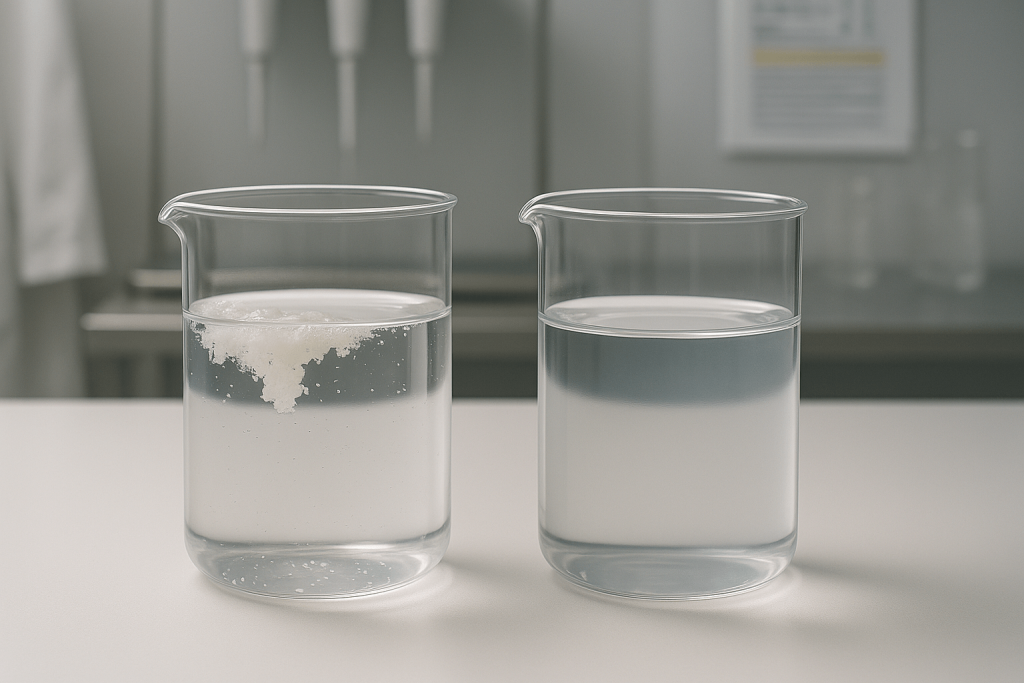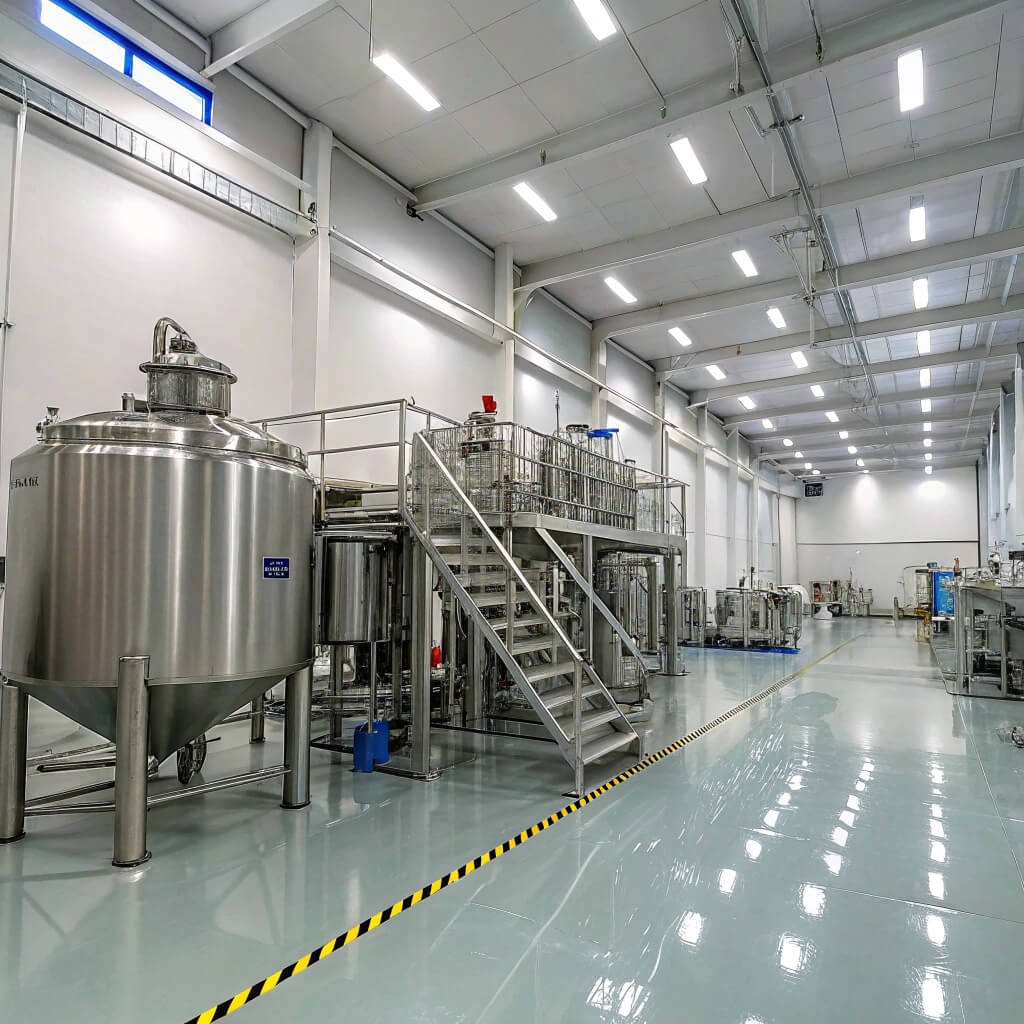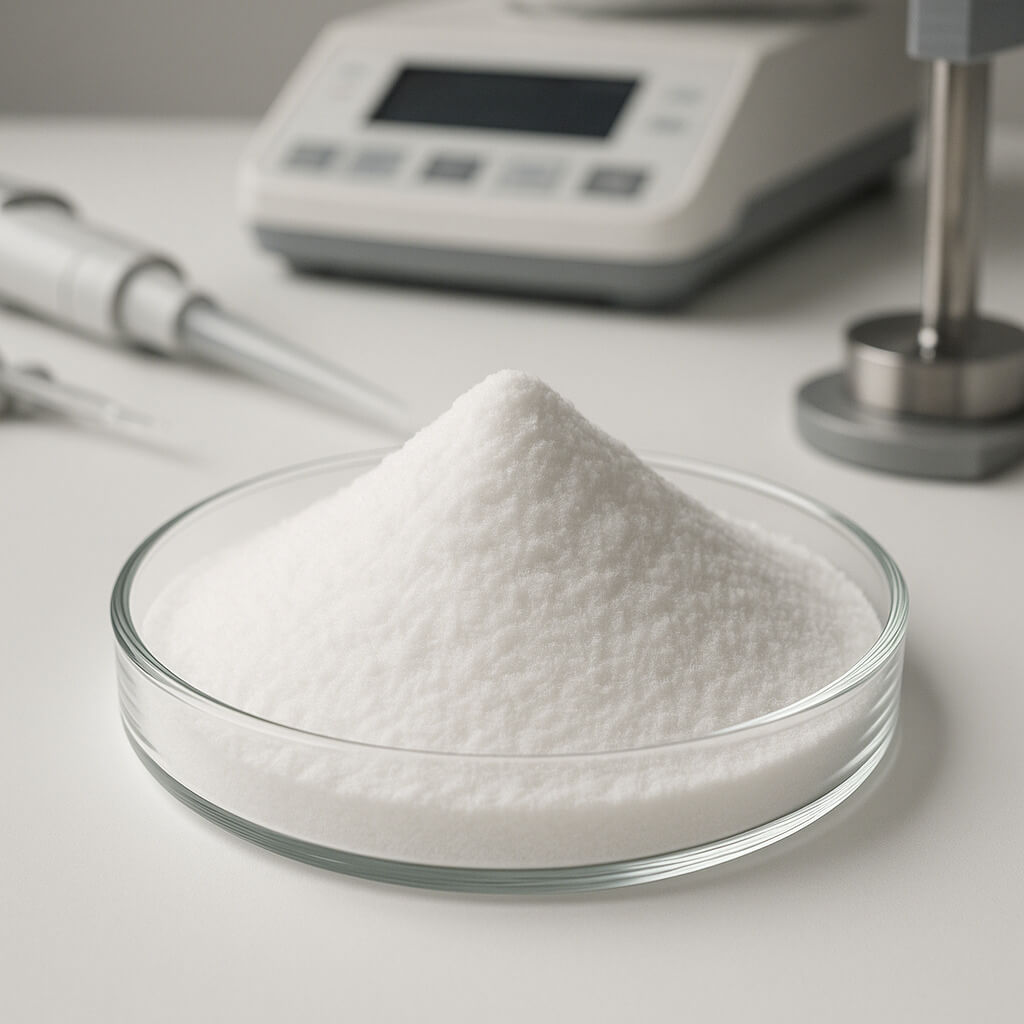Methyl Cellulose (MC) and Hydroxypropyl Methyl Cellulose (HPMC) are two commonly used cellulose derivatives, each with distinct properties and applications. These polymers play an important role in various industries, including pharmaceuticals, food, and construction. But how do they differ? This article will provide a detailed comparison of MC and HPMC, highlighting the differences in their chemical structures, solubility, viscosity, and applications.

1. What is Methyl Cellulose (MC)?
Methyl Cellulose (MC) is a cellulose-derived polymer that is chemically modified to create a water-soluble compound. It’s typically used in applications requiring thickening, emulsification, and stabilization. MC’s structure consists of a cellulose backbone with methyl groups attached, making it soluble in cold water. Unlike many other polysaccharides, MC does not gel in water, which makes it a unique option in the realm of water-soluble polymers.
MC’s primary uses span multiple industries. In the food sector, it acts as a thickener and stabilizer for various products like sauces, dressings, and bakery goods. In the pharmaceutical industry, it is commonly used as a binder in tablet formulations and as a suspending agent for liquid drugs. Its ability to form a stable dispersion in water makes it useful in cosmetics for products like lotions and creams.
Here’s where things get interesting. Methyl cellulose is unique because it is a thermoreversible gel. This means that when dissolved in water and heated, MC forms a gel, but upon cooling, it returns to a solution. This property is especially useful in the food and pharmaceutical industries where both gel formation and dissolution at different temperatures are required.
| Application Area | Typical Use | Benefits |
|---|---|---|
| Food Industry | Thickening, Stabilizing | Improves texture, stabilizes emulsions |
| Pharmaceuticals | Binder, Suspender | Enhances drug formulation, improves consistency |
| Cosmetics | Emulsification, Texture | Provides smooth texture, stabilizes lotions |
2. What is Hydroxypropyl Methyl Cellulose (HPMC)?
Hydroxypropyl Methyl Cellulose (HPMC) is another cellulose derivative but with an added hydroxypropyl group. This modification increases the solubility of the polymer in both cold and hot water. HPMC is more versatile than MC due to its higher solubility and gel-forming properties, making it ideal for a wide range of applications, including pharmaceuticals, food, and construction.
In pharmaceuticals, HPMC plays a significant role in controlled-release drug formulations, where its gel-forming ability is used to slowly release active ingredients over time. HPMC also serves as a binder in tablet formulations and a stabilizing agent in suspensions. In the food industry, HPMC is used to improve texture, increase viscosity, and stabilize emulsions in a variety of products, including ice creams, sauces, and dressings.
The difference in chemical structure, particularly the addition of the hydroxypropyl group, enhances HPMC’s water retention properties. This makes it a superior choice in applications requiring controlled moisture management, such as in the construction of dry-mix mortars and adhesives. It is also an essential ingredient in cosmetics and personal care products, where its ability to form clear, stable gels is highly valued.
| Application Area | Typical Use | Benefits |
|---|---|---|
| Pharmaceuticals | Controlled-release, Binder | Sustained release, excellent gel formation |
| Food Industry | Thickening, Stabilizing | Enhances texture, stabilizes emulsions |
| Construction | Dry-mix Mortars, Adhesives | Improves adhesion, water retention |
3. What are the Key Differences Between MC and HPMC?
The primary differences between Methyl Cellulose (MC) and Hydroxypropyl Methyl Cellulose (HPMC) lie in their chemical structures and resulting properties. MC has a simpler structure with methyl groups attached to the cellulose backbone, while HPMC has both methyl and hydroxypropyl groups. This modification in HPMC allows it to have superior water retention and solubility compared to MC.
One of the most significant differences is in their gelling behavior. MC is known for being thermoreversible, forming a gel when heated but reverting to a solution when cooled. In contrast, HPMC can form a gel at room temperature and maintain its gel state even at higher temperatures, making it more suitable for applications that require a stable gel consistency.
Viscosity is another key area where these two polymers diverge. HPMC typically has a higher viscosity than MC, which allows it to be more effective in applications requiring thicker solutions or stronger gels, such as in controlled-release pharmaceutical tablets or high-viscosity food products.
| Property | Methyl Cellulose (MC) | Hydroxypropyl Methyl Cellulose (HPMC) |
|---|---|---|
| Solubility | Soluble in cold water | Soluble in both cold and hot water |
| Gelling Behavior | Thermoreversible gel | Forms stable gels at room temperature |
| Viscosity | Lower viscosity | Higher viscosity |
4. How Does the Water Solubility of MC and HPMC Compare?
Water solubility is a critical factor in determining the usability of MC and HPMC in various applications. Methyl Cellulose is primarily soluble in cold water, which is advantageous in specific applications, such as in food products where the solubility at lower temperatures is required. The solubility of MC allows for easy incorporation into formulations without the need for heating, making it an ideal choice for food processing.
On the other hand, Hydroxypropyl Methyl Cellulose (HPMC) is soluble in both cold and hot water, which expands its usability in various industrial applications. This property of HPMC makes it particularly useful in pharmaceutical applications where both hot and cold solutions may be required for different drug release profiles. It is also preferred in construction applications such as cement-based products and adhesives, where water solubility across varying temperatures is critical.
In essence, HPMC offers greater flexibility due to its solubility in a broader range of temperatures, making it a more versatile choice in many formulations. This enhanced solubility is key in applications that demand consistency and uniformity in gel formation or dissolution rates.
| Property | Methyl Cellulose (MC) | Hydroxypropyl Methyl Cellulose (HPMC) |
|---|---|---|
| Water Solubility | Cold water only | Soluble in both cold and hot water |
| Common Applications | Food, Pharmaceuticals | Pharmaceuticals, Food, Construction |
5. What Role Do Viscosity and Gel Formation Play in MC vs HPMC?
Viscosity and gel formation are crucial factors that influence the functionality of both Methyl Cellulose (MC) and Hydroxypropyl Methyl Cellulose (HPMC). The viscosity of these polymers determines how thick or thin a solution or gel will be, which is essential for various industrial applications.
MC typically provides a lower viscosity compared to HPMC, making it ideal for products that require a thinner consistency or quicker dissolution. Its thermoreversible gelation is beneficial in applications where temperature-sensitive gel formation is needed, such as in some food products or pharmaceutical coatings.
HPMC, on the other hand, tends to have higher viscosity, which makes it more suitable for thicker solutions and stronger gels. This characteristic is especially important in the pharmaceutical industry for controlled-release formulations. HPMC’s ability to form a stable gel at room temperature and maintain viscosity at higher temperatures makes it an essential ingredient in construction adhesives and mortars, where a stronger bond and longer setting time are required.
The impact of viscosity and gel formation cannot be overstated in product development. The ability to control the viscosity and gel strength allows manufacturers to tailor their products to meet the specific needs of different industries.
| Property | Methyl Cellulose (MC) | Hydroxypropyl Methyl Cellulose (HPMC) |
|---|---|---|
| Viscosity | Lower viscosity | Higher viscosity |
| Gel Formation | Thermoreversible | Stable gel formation at room temp |
| Applications | Food, Pharmaceuticals | Pharmaceuticals, Construction |
6. In What Industries Are MC and HPMC Used, and How Do They Differ in Their Applications?
Both Methyl Cellulose (MC) and Hydroxypropyl Methyl Cellulose (HPMC) are used across multiple industries, but their unique properties make them better suited for different applications.
In the food industry, MC is commonly used as a thickening agent for sauces, soups, and dressings due to its ability to form stable emulsions and provide smooth textures. HPMC is preferred in the food industry for products that require a thicker consistency or stronger gel formation, such as in ice cream and bakery products. It is also used in the pharmaceutical industry for controlled-release tablet formulations, where its gel-forming ability ensures that active ingredients are released slowly over time.
In the construction industry, HPMC’s superior water retention and higher viscosity make it the ideal choice for mortar, tile adhesives, and other cement-based products. MC, being less viscous, is less commonly used in construction but may still be found in some lightweight applications where minimal gel formation is required.
The choice between MC and HPMC depends largely on the specific needs of the application, particularly in terms of viscosity, gel formation, and solubility.
| Industry | Methyl Cellulose (MC) | Hydroxypropyl Methyl Cellulose (HPMC) |
|---|---|---|
| Food Industry | Emulsifying, Thickening | Gel formation, Texture improvement |
| Pharmaceutical | Binder, Suspender | Controlled-release, Binder |
| Construction | Rarely used | Water retention, Adhesion |
7. What Are the Advantages of Using HPMC Over MC?
HPMC has several advantages over MC, particularly in industries that require a higher viscosity and more stable gel formation. For example, in the pharmaceutical industry, HPMC is often used in controlled-release formulations because its gel-forming properties allow for the slow release of active ingredients over an extended period. This makes HPMC a preferred choice for drug delivery systems that require prolonged therapeutic effects.
In the construction industry, HPMC’s ability to retain water and maintain a stable consistency over time makes it the go-to choice for products like adhesives and mortars. Its superior water retention properties help to prevent cracking and improve the workability of the materials.
In the food industry, HPMC’s ability to form stable gels at room temperature and its higher viscosity make it ideal for use in products like ice cream and bakery goods. The stronger gels formed by HPMC provide the necessary texture and mouthfeel in these products, which is not achievable with MC.
| Advantage | Methyl Cellulose (MC) | Hydroxypropyl Methyl Cellulose (HPMC) |
|---|---|---|
| Viscosity | Lower viscosity | Higher viscosity |
| Gel Formation | Thermoreversible | Stable gels at room temp |
| Industry Preference | Food, Pharmaceuticals | Pharmaceuticals, Construction |
8. How Do MC and HPMC Affect Product Texture and Consistency?
MC and HPMC play a critical role in improving the texture and consistency of a wide range of products. MC’s ability to form stable emulsions helps in creating smooth textures in food and cosmetics. It provides the necessary viscosity for liquids, ensuring that products like sauces and soups have the right texture and stability.
HPMC, with its higher viscosity, is used when a stronger gel is needed. It is commonly found in pharmaceutical formulations, where it helps to control the release of drugs. HPMC’s ability to form a consistent gel at room temperature also makes it ideal for use in personal care products like shampoos and lotions, where maintaining a stable texture is essential.
Both MC and HPMC allow manufacturers to control the consistency of their products, whether that involves thickening, stabilizing, or forming gels. The choice between the two depends on the desired texture and consistency required for the final product.
| Property | Methyl Cellulose (MC) | Hydroxypropyl Methyl Cellulose (HPMC) |
|---|---|---|
| Texture | Smooth, consistent | Firm, stable gel |
| Use in Food | Sauces, Dressings | Ice Cream, Bakery Products |
| Use in Cosmetics | Lotions, Creams | Gels, Shampoos |
9. What Are the Environmental and Safety Considerations for MC and HPMC?
Both Methyl Cellulose (MC) and Hydroxypropyl Methyl Cellulose (HPMC) are derived from natural cellulose, which makes them biodegradable and environmentally friendly compared to many synthetic polymers. However, there are slight differences in their environmental impact.
MC is generally considered to have a lower environmental impact because it is derived from wood pulp, a renewable resource. It is biodegradable and does not contribute significantly to environmental pollution.
HPMC, being more chemically modified, may have a slightly greater environmental footprint in terms of its production process. However, its versatility and wide range of applications make it a highly valuable material in multiple industries.
From a safety perspective, both MC and HPMC are generally regarded as safe for use in food, pharmaceuticals, and cosmetics. They are non-toxic, non-irritating, and comply with industry safety standards.
| Property | Methyl Cellulose (MC) | Hydroxypropyl Methyl Cellulose (HPMC) |
|---|---|---|
| Environmental Impact | Lower impact | Slightly higher due to modification |
| Biodegradability | Fully biodegradable | Biodegradable, though more complex |
| Safety | Non-toxic, non-irritating | Non-toxic, non-irritating |
10. How Do You Choose Between MC and HPMC for Your Application?
Choosing between Methyl Cellulose (MC) and Hydroxypropyl Methyl Cellulose (HPMC) depends on several factors, including viscosity requirements, gel formation needs, and solubility preferences. For applications that require a lower viscosity and cold-water solubility, MC is the preferred option. It is ideal for food applications where smooth textures and quick dissolution are essential.
For products that require higher viscosity, stronger gels, or hot-water solubility, HPMC is the better choice. It is highly effective in controlled-release pharmaceutical formulations and in construction materials where water retention is critical.
To make the right choice, it’s important to consider the specific requirements of your product and industry. Understanding the differences between MC and HPMC can help ensure that your formulations meet the desired performance standards.
| Factor | Methyl Cellulose (MC) | Hydroxypropyl Methyl Cellulose (HPMC) |
|---|---|---|
| Viscosity | Lower viscosity | Higher viscosity |
| Gelling Ability | Thermoreversible gel | Stable gel formation at room temp |
| Application | Food, Pharmaceuticals | Pharmaceuticals, Food, Construction |
FAQ Section
Q1: What is Methyl Cellulose (MC)?
Answer: Methyl Cellulose (MC) is a cellulose derivative used as a thickening agent, binder, and emulsifier in various applications, including food, pharmaceuticals, and cosmetics.
Q2: How does Hydroxypropyl Methyl Cellulose (HPMC) work?
Answer: HPMC is a cellulose derivative that offers enhanced solubility, gel formation, and water retention, making it suitable for controlled-release pharmaceuticals, food formulations, and construction materials.
Q3: What is the difference between Methyl Cellulose and Hydroxypropyl Methyl Cellulose?
Answer: The main difference is in their chemical structure. HPMC contains both methyl and hydroxypropyl groups, which provide superior solubility and gel-forming ability compared to MC, which only contains methyl groups.
Q4: What industries use Methyl Cellulose and HPMC?
Answer: Both MC and HPMC are used in industries such as food, pharmaceuticals, cosmetics, and construction, but HPMC is preferred for applications requiring higher viscosity and gel strength.
Q5: How do I choose between Methyl Cellulose and HPMC for my product?
Answer: The choice depends on the desired viscosity, gel strength, and solubility. MC is ideal for lower viscosity and smoother textures, while HPMC is best for higher viscosity and stable gel formation.




